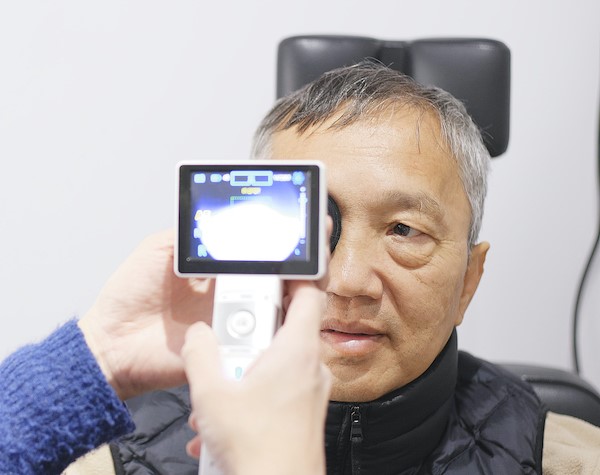Protecting Your Vision When You Have Diabetes
Most people forget or choose to ignore the fact that diabetes greatly impacts their vision, and protecting their vision is a huge part of managing diabetes. Diabetic retinopathy (DR) and diabetic macular edema (DME) are two of the most common vision-related complications of diabetes, and they can lead to serious vision loss if left unchecked. The good news? With early detection and the right care, vision loss can often be prevented or slowed.
At London Eye & Retina, we support individuals with diabetes in protecting their sight through regular screening and tailored treatment for DR and DME. If you have diabetes and haven’t had a retinal check recently, now is the time to prioritise your eye health.
What Is Diabetic Retinopathy?
Diabetic retinopathy is a condition where prolonged high blood sugar damages the tiny blood vessels in the retina, the light-sensitive tissue at the back of the eye. This damage can cause:
- Leaking blood vessels
- Formation of abnormal vessels
- Scar tissue and retinal swelling
- Retinal detachment in advanced stages
DR progresses through several stages, from mild non-proliferative changes to proliferative diabetic retinopathy (PDR), where new, fragile vessels form and pose a high risk of bleeding and vision loss.
What Is Diabetic Macular Edema (DME)?
DME is a specific complication of DR where fluid leaks into the macula, the part of the retina responsible for central, detailed vision. Swelling in this area can cause:
- Blurred or distorted vision
- Difficulty reading or recognising faces
- Vision loss that can be gradual or sudden
DME can occur at any stage of diabetic retinopathy and is one of the leading causes of vision loss in diabetic patients.
What Are the Risk Factors?
The risk of DR and DME increases with:
- Longer duration of diabetes
- Poor blood sugar control
- High blood pressure or cholesterol
- Smoking
- Pregnancy (in diabetic patients)
Symptoms to Watch For
Often, early DR has no symptoms, which is why routine screening is essential. As it progresses, you may notice:
- Blurred or fluctuating vision
- Dark spots or floaters
- Colours appear dull or washed out.
- Vision loss in one or both eyes
How Are DR and DME Diagnosed?
Diagnosis is made through a comprehensive eye exam, including:
- Dilated retinal exam
- Optical Coherence Tomography (OCT): To detect retinal swelling
- Fluorescein angiography: To map out leaking or abnormal blood vessels
These tests help determine the severity of DR and the presence of DME, guiding treatment decisions.
Treatment Options
Treatment depends on the stage and severity of the condition. Options include:
- Anti-VEGF Injections: To reduce fluid and prevent abnormal vessel growth
- Steroid Injections or Implants: Useful in selected cases of persistent macular swelling
- Laser Therapy: To seal leaking vessels or reduce oxygen demand in the retina
- Vitrectomy Surgery: For cases with significant bleeding or retinal detachment
Take Control of Your Eye Health
Managing Diabetes not only involves controlling sugar levels, it also constantly requires protection, especially protecting your vision. Regular eye screening, good blood sugar control, and timely treatment can make all the difference.
Schedule a consultation with Dr. James Ng at London Eye & Retina and explore your options for clearer, sharper sight.
Let us help you preserve your sight and stay ahead of diabetic eye disease.


